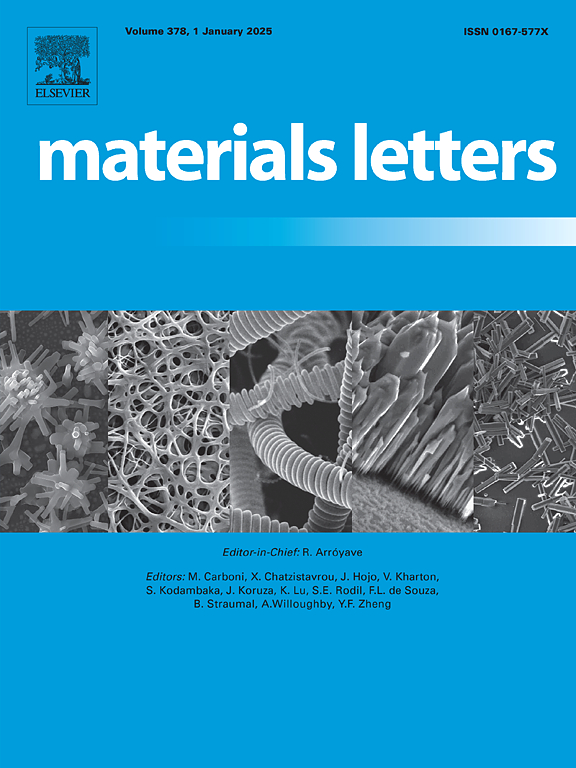具有硫空位的缺陷 ZnS 卵黄壳纳米球用于高效声催化制取 H2
IF 2.7
4区 材料科学
Q3 MATERIALS SCIENCE, MULTIDISCIPLINARY
引用次数: 0
摘要
本研究采用简便的溶热法合成了有缺陷的 ZnS 卵黄壳纳米球,然后通过煅烧过程引入硫空位。与 ZnS 纳米球和其他常用的声催化剂相比,有缺陷的 ZnS 卵黄壳纳米球在制氢方面表现出优异的声催化性能。增强的声催化活性归功于卵壳结构和硫空位的引入所产生的协同效应。此外,有缺陷的 ZnS 卵黄壳纳米球在声催化制氢方面表现出良好的稳定性。本文章由计算机程序翻译,如有差异,请以英文原文为准。

Defective ZnS yolk-shell nanospheres with sulfur vacancy for efficient sonocatalytic H2 production
In this study, the defective ZnS yolk shell nanospheres are synthesized through a facile solvothermal method followed by a calcination process to introduce sulfur vacancies. The defective ZnS yolk-shell nanospheres show excellent sonocatalytic performance for hydrogen production, as compared to ZnS nanospheres and other commonly used sonocatalysts. The enhanced sonocatalytic activity is attributed to the synergistic effect of the yolk-shell structure and the introduction of sulfur vacancies. Furthermore, the defective ZnS yolk-shell nanospheres demonstrate good stability for sonocatalytic hydrogen production.
求助全文
通过发布文献求助,成功后即可免费获取论文全文。
去求助
来源期刊

Materials Letters
工程技术-材料科学:综合
CiteScore
5.60
自引率
3.30%
发文量
1948
审稿时长
50 days
期刊介绍:
Materials Letters has an open access mirror journal Materials Letters: X, sharing the same aims and scope, editorial team, submission system and rigorous peer review.
Materials Letters is dedicated to publishing novel, cutting edge reports of broad interest to the materials community. The journal provides a forum for materials scientists and engineers, physicists, and chemists to rapidly communicate on the most important topics in the field of materials.
Contributions include, but are not limited to, a variety of topics such as:
• Materials - Metals and alloys, amorphous solids, ceramics, composites, polymers, semiconductors
• Applications - Structural, opto-electronic, magnetic, medical, MEMS, sensors, smart
• Characterization - Analytical, microscopy, scanning probes, nanoscopic, optical, electrical, magnetic, acoustic, spectroscopic, diffraction
• Novel Materials - Micro and nanostructures (nanowires, nanotubes, nanoparticles), nanocomposites, thin films, superlattices, quantum dots.
• Processing - Crystal growth, thin film processing, sol-gel processing, mechanical processing, assembly, nanocrystalline processing.
• Properties - Mechanical, magnetic, optical, electrical, ferroelectric, thermal, interfacial, transport, thermodynamic
• Synthesis - Quenching, solid state, solidification, solution synthesis, vapor deposition, high pressure, explosive
 求助内容:
求助内容: 应助结果提醒方式:
应助结果提醒方式:


